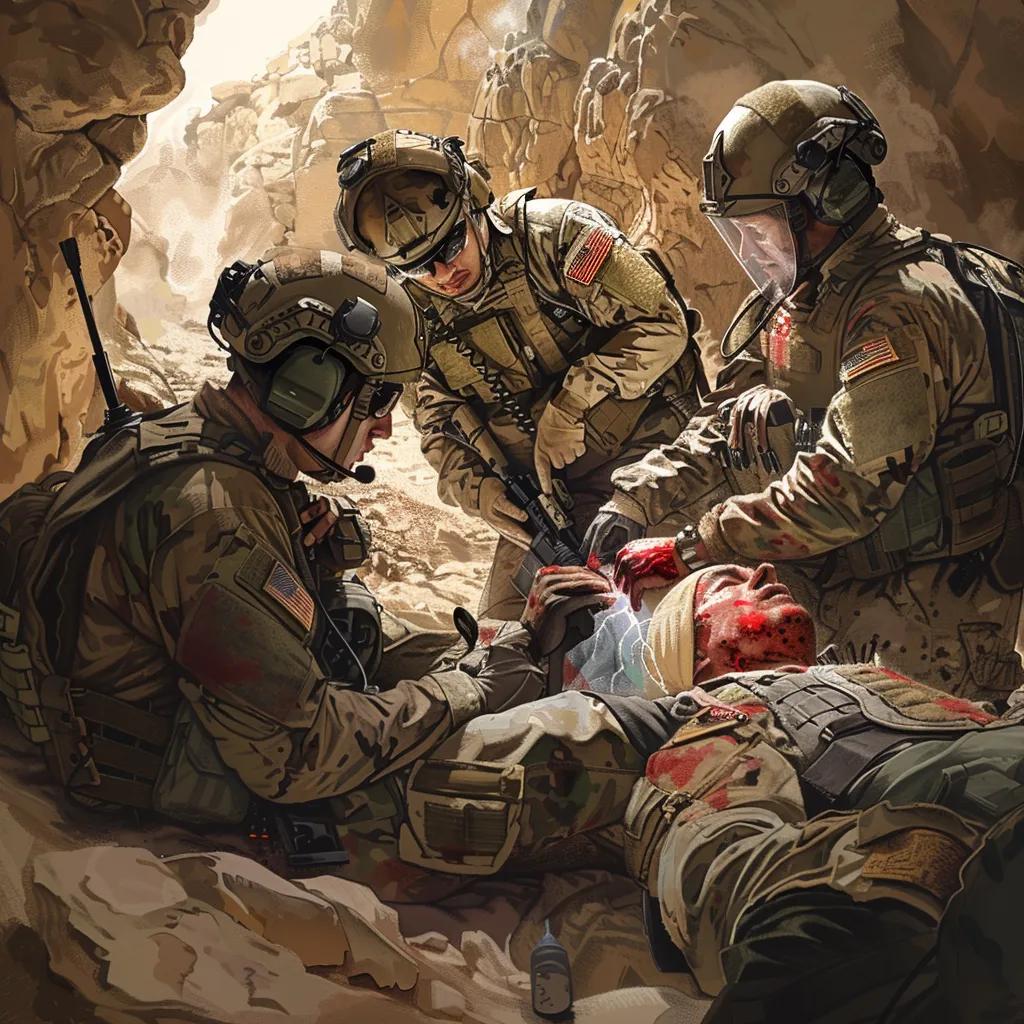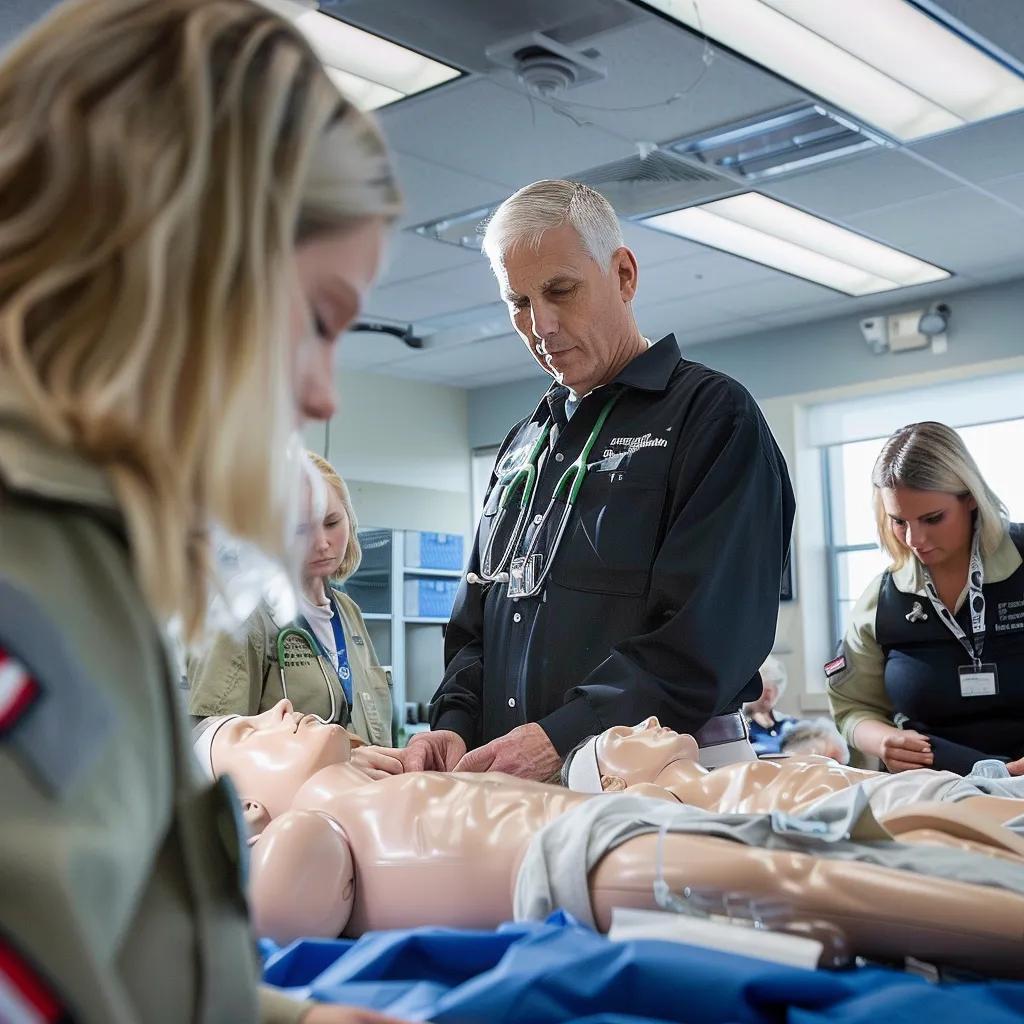Tactical Combat Casualty Care (TCCC) represents a critical evolution in battlefield medicine, delivering evidence-based prehospital trauma care guidelines designed to save lives under fire and in austere environments. This comprehensive guide explores TCCC’s core principles and phased approach, details the MARCH algorithm for prioritizing life-saving interventions, outlines essential medical equipment, explains certification pathways, adapts TCCC for civilians and first responders, reviews common operational questions, and emphasizes the necessity of ongoing guideline updates. By integrating tactical context with advanced trauma management techniques, TCCC training equips military personnel, law enforcement, EMS, and prepared civilians with the skills to control hemorrhage, secure airways, manage shock, and prevent hypothermia—foundational capabilities when seconds count.
What Are the Core Principles and Phases of Tactical Combat Casualty Care?
TCCC is founded on three guiding principles—prevent further casualties, treat preventable deaths, and deliver definitive care—applied across sequential phases that adapt medical interventions to tactical realities. By structuring trauma management into discrete stages, TCCC ensures the right treatment at the right time, optimizing survival while maintaining mission objectives.
What Is Tactical Combat Casualty Care and Why Is It Important?
Tactical Combat Casualty Care provides structured prehospital protocols that reduce the historically high rate of preventable battlefield fatalities by addressing the leading causes of death—massive hemorrhage, airway compromise, tension pneumothorax, and shock—directly at the point of injury. Originating from combat data analysis and refined by the Committee on Tactical Combat Casualty Care, TCCC’s life-saving purpose lies in its adaptability: medics and non-medical personnel learn to apply tourniquets, chest seals, and airway adjuncts under fire, bridging the gap until evacuation.
This focus on rapid, evidence-based interventions has driven a marked decrease in combat mortality and serves as the foundation for civilian active-shooter and mass-casualty preparedness programs.
What Are the Three Phases of TCCC?
TCCC divides care into three operational phases—Care Under Fire, Tactical Field Care, and Tactical Evacuation Care—each with distinct priorities and resource considerations.
- Care Under Fire emphasizes self-aid and buddy-aid hemorrhage control using tourniquets while still under hostile fire.
- Tactical Field Care shifts to detailed assessment and treatment, including airway management, breathing interventions, and fluid resuscitation in a secured area.
- Tactical Evacuation Care continues definitive interventions during casualty transport, optimizing patient monitoring and advanced care en route to a medical facility.
These phased protocols synchronize medical tasks with tactical constraints, ensuring continuity of care as the situation evolves.
How Do the Phases of Care Impact Trauma Management?
By aligning medical priorities with battlefield conditions, each TCCC phase dictates specific interventions and equipment placement, reducing cognitive overload and enabling first responders to focus on the highest-impact treatments. For example, during Care Under Fire, tourniquet application takes precedence over airway maneuvers, whereas Tactical Field Care allows time for nasopharyngeal airway insertion, needle decompression, and intravenous access. This graduated approach minimizes preventable deaths by matching procedure complexity to tactical risk, ultimately streamlining trauma management from point of injury to definitive care.
How Does TCCC Reduce Preventable Combat Deaths?

Extensive data demonstrate that TCCC training and protocols have decreased preventable combat fatalities by addressing the “Big Four”—extremity hemorrhage, airway obstruction, tension pneumothorax, and hypothermia—through rapid, targeted interventions and improved casualty evacuation. A 2018 study in the Journal of Trauma and Acute Care Surgery reported a 30 percent reduction in battlefield mortality following widespread TCCC adoption, underscoring its transformative impact on survival and informing civilian bleeding control initiatives such as the Stop the Bleed campaign.
Effectiveness of TCCC in Reducing Mortality
Studies have shown that the implementation of Tactical Combat Casualty Care (TCCC) protocols has significantly reduced preventable combat fatalities. A 2018 study highlighted a 30% reduction in battlefield mortality following the widespread adoption of TCCC, underscoring its transformative impact on survival rates.
Journal of Trauma and Acute Care Surgery (2018)
This research directly supports the article's claim regarding the effectiveness of TCCC in improving survival outcomes.
How Does the MARCH Algorithm Prioritize Life-Saving Interventions in TCCC?
The MARCH algorithm is a mnemonic that structures the sequence of critical interventions in Tactical Combat Casualty Care—Massive Hemorrhage, Airway, Respiration, Circulation, Hypothermia/Head Injury—to ensure the most lethal conditions are managed first in a tactical setting. By following MARCH, responders rapidly assess and treat life-threatening injuries with a standardized, reproducible process.
What Is the MARCH Algorithm and Its Role in TCCC?
MARCH stands for Massive Hemorrhage, Airway, Respiration, Circulation, and Hypothermia/Head Injury, reflecting the descending order of intervention priority based on mortality risk.
MARCH Algorithm and Intervention Priorities
The MARCH algorithm is a critical component of TCCC, providing a structured approach to prioritizing life-saving interventions in tactical settings. The algorithm guides responders through a sequence of actions, starting with massive hemorrhage control and progressing through airway management, respiration, circulation, and hypothermia/head injury prevention.
Committee on Tactical Combat Casualty Care
This citation supports the article's explanation of the MARCH algorithm and its role in prioritizing interventions.
This procedural framework guides medics through high-stress environments to control bleeding, secure airways, treat chest trauma, restore perfusion, and prevent environmental and neurologic complications, thereby optimizing casualty survival before evacuation.
How Is Massive Hemorrhage Controlled in TCCC?
Massive hemorrhage control in TCCC relies on combat application tourniquets, wound packing with hemostatic agents, and pressure dressings to stop arterial bleeding swiftly.
- Apply a tourniquet 2–3 inches above the wound and tighten until bleeding ceases.
- Pack deep or junctional wounds with combat gauze, applying firm pressure for at least 3 minutes.
- Secure hemostatic dressings with pressure bandages if direct compression is possible.
These interventions interrupt blood loss immediately and are reinforced during subsequent care phases.
What Are the Best Practices for Airway Management in Tactical Trauma?
Securing the airway in TCCC follows a stepwise approach:
- Positioning with a jaw-thrust or chin-lift maneuver unless a cervical spine injury is suspected.
- Nasopharyngeal airway (NPA) insertion for unconscious or semiconscious casualties.
- Surgical cricothyroidotomy when oropharyngeal airways fail or facial trauma precludes less invasive methods.
This staged protocol balances effectiveness with procedural complexity, ensuring oxygenation without unnecessary delays.
How Are Respiration and Circulation Assessed and Managed?
Respiratory compromise and circulatory shock require prompt recognition and tailored interventions:
- Chest seals over open chest wounds to prevent tension pneumothorax.
- Needle decompression at the 2nd intercostal space for suspected tension pneumothorax.
- Intravenous (IV) or intraosseous (IO) access for isotonic fluid boluses to maintain perfusion.
Continuous monitoring of respiratory rate, lung sounds, pulse, and mental status guides ongoing management through the phases of care.
How Is Hypothermia and Head Injury Prevented and Treated?
Injury-induced hypothermia exacerbates coagulopathy and shock, while head trauma demands careful monitoring. Preventive measures include insulating casualties with blankets or hypothermia prevention kits and maintaining ambient warmth during evacuation. Neurologic assessment using pupil reactivity and level of consciousness guides head-injury management, with progressive evacuation to advanced care when intracranial pressure or hemorrhage is suspected.
What Are Practical Examples of Applying the MARCH Algorithm?
Consider a downed soldier with an extremity wound, altered mental status, and chest penetration. Under fire, a buddy applies a tourniquet (M), then positional maneuvers and NPA insertion secure the airway (A). A chest seal and needle decompression address trauma pneumothorax (R), followed by an IO line and warm fluids for shock (C), and insulated packaging to prevent hypothermia (H). This scenario illustrates seamless application of MARCH under tactical constraints.
What Essential Equipment and Medical Devices Are Recommended for TCCC?
A well-prepared TCCC medical kit contains devices optimized for rapid hemorrhage control, airway management, chest trauma treatment, and shock management, balancing portability with capability. The following table summarizes core items, their attributes, and operational value.
Before reviewing the list, note that each tool must be rugged, user-friendly under stress, and compatible with standardized training procedures.
| Entity | Attribute | Value |
|---|---|---|
| Combat Application Tourniquet | Purpose | Rapid extremity hemorrhage control |
| Combat Gauze | Mechanism | Kaolin-based hemostatic agent for wound packing |
| Nasopharyngeal Airway (NPA) | Feature | Flexible, size-specific airway adjunct for unconscious casualties |
| Chest Seal | Benefit | One-way valve to prevent tension pneumothorax |
| IO Drill | Use | Intraosseous access for fluid and medication administration |
| Hypothermia Prevention Kit | Function | Insulative blanket and heat-reflective materials |
Which Tourniquets and Hemostatic Devices Are Most Effective?
Combat application tourniquets with windlass systems rank highest for ease of use and consistent arterial occlusion, while kaolin-impregnated dressings like Combat Gauze accelerate clot formation. Users should carry at least two tourniquets and multiple hemostatic dressings to address multiple bleeding sites or device failure scenarios.
What Airway Management Tools Are Used in Tactical Settings?
Essential airway adjuncts include size-graded NPAs, oropharyngeal airways for non-trauma cases, and a scalpel-bougie-tube kit for cricothyroidotomy. The kit must fit into a compact pouch with color-coded sizing to expedite selection under pressure.
How Should a Tactical Medical Kit Be Assembled for Survival Trauma Care?
An optimal kit organizes gear into clearly labeled compartments:
- Hemorrhage Control: tourniquets, gauze, pressure dressings
- Airway Management: NPA, OPA, suction devices
- Breathing Interventions: chest seals, decompression needles
- Circulation Support: IO drill, saline or blood products
- Preventive Care: hypothermia kit, analgesics, hemostatic dressings
This modular layout ensures rapid retrieval and reduces decision fatigue during high-stress encounters.
What Are the Limitations and Proper Use of TCCC Equipment?
Specialized devices require regular hands-on training to ensure proficiency, and environmental factors—extreme cold, contamination—can impair performance. Routine inspection, cleaning, and replacement according to manufacturer guidelines preserve functionality and user confidence.
How Can You Obtain TCCC Training and Certification?

TCCC certification ranges from basic, non-medical levels to advanced courses for medical professionals, all governed by the Committee on Tactical Combat Casualty Care and delivered by recognized providers such as NAEMT and CoTCCC-approved instructors. Formal coursework combines didactic lectures, hands-on skill stations, and scenario-based assessments.
What Are the Available TCCC Course Levels and Curriculums?
Course offerings include:
- TCCC for Non-Medical Personnel covering self-aid and buddy-aid techniques.
- TCCC for Medical Personnel featuring comprehensive MARCH training and advanced procedures.
- TCCC Instructor Course preparing certified practitioners to teach and update TCCC guidelines.
Who Provides Official TCCC Certification and Training?
Accredited organizations like the National Association of Emergency Medical Technicians and military medical training centers deliver courses aligned with CoTCCC standards. Private tactical medicine institutes also offer modular programs under CoTCCC authorization.
How Is Hands-On Practical Training Conducted in TCCC Courses?
Scenario-based exercises simulate battlefield conditions—live-fire noise, simulated casualties with moulage, timed care under stress—to assess competency in tourniquet application, airway management, chest decompression, IO access, and casualty evacuation.
What Are the Benefits of TCCC Certification for Military and Civilians?
Certified individuals demonstrate proficiency in high-risk trauma care, enhancing team readiness, improving survival rates, and expanding career opportunities in military medicine, law enforcement, emergency services, and civilian preparedness programs.
How Is Tactical Combat Casualty Care Adapted for Civilians and First Responders?
While TCCC originated for military operations, its principles underpin civilian Tactical Emergency Casualty Care (TECC) protocols, bridging the gap between battlefield medicine and public safety response. Adaptations focus on legal scope of practice, available equipment, and common injury patterns in active-shooter or mass-casualty incidents.
What Are the Differences Between TCCC and TECC for Civilian Use?
TECC modifies TCCC by emphasizing practical scope limits—allowing bleeding control and airway adjuncts within typical EMS and law enforcement authorities—while de-prioritizing advanced surgical procedures reserved for medical personnel.
How Can Civilians Apply TCCC Principles in Emergency Preparedness?
Individuals and community responders can integrate TCCC-derived kits and training into home, workplace, and vehicle first-aid programs, focusing on tourniquet use, wound packing, and hypothermia prevention to address severe bleeding and shock in any environment.
What Equipment Should Civilians Include in Their Trauma Kits?
Civilian kits should contain at least one windlass tourniquet, hemostatic dressings, chest seals, an NPA, and thermal blankets—items that provide immediate bleeding control and airway support before EMS arrival.
How Does TCCC Training Benefit Law Enforcement and EMS Personnel?
Cross-sector training standardizes trauma protocols, streamlines interagency coordination, and improves casualty outcomes by equipping first responders with identical terminology, equipment familiarity, and procedural steps during high-threat operations.
What Are Common Tactical Combat Casualty Care Questions and Answers?
Tactical Combat Casualty Care protocols resolve critical battlefield trauma priorities by standardizing evidence-based interventions in a predictable order, ensuring casualties receive the most urgent treatments without tactical compromise.
What Are the 3 Phases of TCCC?
Tactical Combat Casualty Care operates through Care Under Fire (bleeding control under direct threat), Tactical Field Care (comprehensive assessment and treatment in a secure zone), and Tactical Evacuation Care (advanced en-route management).
What Is the MARCH Algorithm in TCCC?
The MARCH algorithm sequences interventions by controlling Massive Hemorrhage, securing the Airway, addressing Respiration, restoring Circulation, and preventing Hypothermia/Head Injury.
Who Developed the TCCC Guidelines?
The Committee on Tactical Combat Casualty Care, composed of military and medical experts, authors and updates TCCC best practices based on operational data and trauma research.
Is TCCC Training Required for Civilians?
While not mandated, TCCC-based TECC courses are highly recommended for law enforcement, EMS, and prepared civilians seeking advanced hemorrhage control and trauma management skills beyond basic first aid.
What Equipment Is Used in TCCC?
Key devices include combat tourniquets, hemostatic gauze, chest seals, NPAs, decompression needles, IO drills, and hypothermia kits, all selected for battlefield durability and ease of use.
Why Is Continuous Training and Guideline Updates Critical in TCCC?
Ongoing education and periodic revisions to TCCC guidelines ensure that combat medics and first responders adopt the latest evidence-based interventions, medical devices, and evacuation strategies, maintaining peak performance in evolving operational environments.
How Does CoTCCC Update Tactical Combat Casualty Care Guidelines?
The Committee on Tactical Combat Casualty Care conducts regular reviews of combat injury data, medical research, and user feedback, issuing guideline updates every 2–3 years to reflect emerging protocols and technological advances.
TCCC Guideline Updates
The Committee on Tactical Combat Casualty Care (CoTCCC) regularly updates TCCC guidelines based on combat injury data, medical research, and user feedback. These updates, issued every 2–3 years, reflect emerging protocols and technological advances to ensure the most effective trauma care.
Committee on Tactical Combat Casualty Care
This citation supports the article's emphasis on the importance of continuous training and guideline updates in TCCC.
What Are Recent Advances and Trends in Tactical Trauma Care?
Innovations include hemorrhage control devices with integrated sensors, lightweight negative-pressure evacuation systems, telemedicine support for field medics, and next-generation hemostatic agents that accelerate clot formation.
How Can Practitioners Stay Informed About TCCC Developments?
Medical directors and training officers should subscribe to CoTCCC and NAEMT newsletters, monitor peer-reviewed tactical medicine journals, and attend annual conferences hosted by the Special Operations Medical Association.
Securing proficiency in Tactical Combat Casualty Care empowers responders to control life-threatening trauma efficiently under fire and in austere environments. By mastering the phased care model, the MARCH algorithm, and essential medical equipment, certified practitioners significantly reduce preventable deaths. Adapting these military-tested protocols for civilian and first-responder contexts broadens community resilience against mass-casualty events. Continuous training and guideline updates ensure that TCCC remains at the forefront of trauma care, empowering teams to deliver rapid, standardized, and effective interventions when every second matters.


